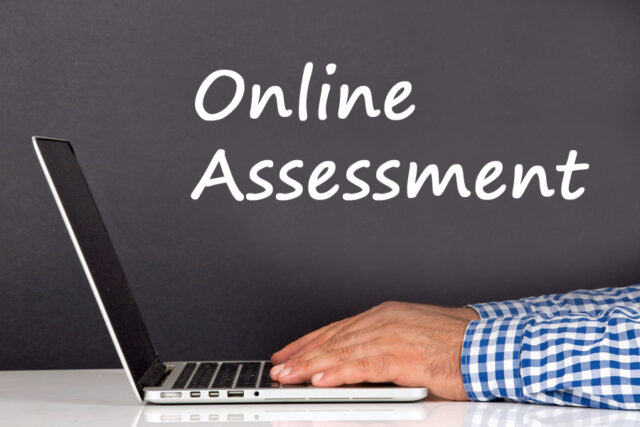
In the evolving education world, the introduction of online assessment tools has brought in a transformative era, fundamentally altering how students get evaluated.
This technological revolution has enhanced the efficiency and accessibility of assessments and yielded significant improvements in student performance and engagement.
According to a recent survey by the National Center for Education Statistics, over 60% of educational institutions in the United States have fully integrated online assessment tools into their curriculum, reflecting a profound shift in educational practices.
This article will explain the remarkable impact of online assessment tools, examining how they are reshaping the evaluation process and propelling education into the digital age.
Learn how to improve educational learning outcomes.
Enhanced Accessibility and Flexibility: Education Without Boundaries

The traditional classroom setup, constrained by fixed schedules and physical boundaries, has been profoundly disrupted by the emergence of online assessment tools. These tools have catapulted education into the digital age and unlocked a world of unparalleled accessibility and flexibility for students.
The era when assessments were tethered to specific locations and rigid timeframes is now a relic of the past. Today, learners can access assessments from virtually anywhere with an internet connection, whether in a bustling city or a remote village.
Moreover, the rise of homework help platforms like do my thesis has further enriched the educational landscape. These platforms offer valuable support, making the educational journey even more seamless and empowering. With such innovative tools at their disposal, students are well-equipped to navigate the educational terrain with confidence and competence.
According to a recent illuminating report by the International Society for Technology in Education (ISTE), the profound impact of this newfound accessibility reaches far beyond mere convenience.
It represents a significant stride toward inclusivity, eliminating the barriers that once hindered students with disabilities or those in underserved areas from fully participating in assessments.
The statistics substantiate this transformational shift, revealing that the adoption of online assessment tools in educational institutions across the United States has surged, with over 60% of schools embracing these tools as integral components of their curricula.
Real-time Feedback and Adaptive Learning

One of the most compelling advantages of online assessment tools is their ability to provide instant feedback.
This real-time feedback loop has been hailed as a catalyst for enhancing the learning process. In a study published in the Journal of Educational Psychology, researchers found that students who receive prompt feedback are more likely to grasp concepts faster and retain knowledge longer.
This immediate reinforcement allows learners to identify their area of weakness and address them without delay, fostering a more proactive approach to education.
But the benefits of online assessment tools don’t stop there. Many platforms employ sophisticated algorithms to offer adaptive learning experiences.
These systems tailor questions and content to each student’s proficiency level, ensuring that learners are challenged at their optimal capacity. This personalized approach to education maximizes knowledge retention and ensures that no student is left behind.
Data-Driven Insights for Educators

For educators, the data generated by online assessment tools is nothing short of a treasure trove. It offers unprecedented insights into student performance, enabling instructors to make data-driven decisions.
According to the Pew Research Center, a staggering 87% of teachers in the United States now utilize data from these tools to monitor student progress and identify areas of improvement.
This data-driven approach empowers educators to tailor their teaching methods to the specific needs of their students.
Whether identifying struggling students for targeted interventions or recognizing high achievers for advanced coursework, online assessment tools have become an indispensable resource in the teacher’s toolkit.
The result is a more responsive and effective educational system that focuses on individual growth.
Mitigating Academic Dishonesty

Academic dishonesty has long been a concern in educational institutions. With the migration of assessments to online platforms, the need for effective measures to combat cheating has become paramount. Online assessment tools have risen to the challenge by implementing innovative solutions.
Features such as plagiarism detection and remote proctoring have become standard in many assessment platforms. They ensure the integrity of evaluations by identifying instances of cheating or academic dishonesty.
A survey conducted by Educause Review revealed that 78% of higher education institutions have reported a decrease in cheating incidents since implementing online assessment systems. This demonstrates the effectiveness of these tools in upholding academic honesty.
Diverse Assessment Formats

Online assessment tools have not just digitized traditional exams; they have expanded the repertoire of assessment formats. While multiple-choice questions remain a staple, educators can leverage various options to evaluate student understanding.
Interactive simulations, multimedia presentations, and even real-world problem-solving scenarios are now within reach. These diverse formats better align assessments with the skills and competencies students need in the modern world.
This adaptability fosters engagement and critical thinking, preparing learners for the demands of the 21st-century workforce.
Cost Efficiency and Sustainability

The adoption of online assessment tools isn’t just beneficial for students and educators. It’s also cost-effective for educational institutions. The Bill & Melinda Gates Foundation conducted a study that highlighted the substantial cost savings associated with transitioning to digital assessments.
Traditional paper-based tests come with expenses related to printing, distribution, and manual scoring. Online assessments significantly reduce these costs, freeing up resources that can be allocated elsewhere in the educational system.
Furthermore, reducing paper usage aligns with the global trend toward eco-friendly education. As institutions embrace sustainability initiatives, the environmental benefits of digital assessments cannot be understated.
In this way, online assessment tools contribute to a more responsible and eco-conscious approach to education.
Global Reach and Standardization
Online assessment tools have played a pivotal role in fostering international cooperation in education. They have facilitated the standardization of assessments on a global scale, making it possible to compare educational systems and outcomes across borders.
Organizations like the Programme for International Student Assessment (PISA) utilize these tools to conduct standardized assessments worldwide.
This standardization allows for meaningful comparisons between educational systems and opens up opportunities for students around the globe to showcase their skills and knowledge on a truly international stage.
Conclusion
Online assessment tools have ushered in a new era of educational evaluation marked by accessibility, personalization, data-driven insights, and enhanced integrity. They have transcended the limitations of traditional assessment methods, propelling education into the digital age.
As the educational landscape evolves, these tools are poised to redefine how students get evaluated, ultimately paving the way for more effective, equitable, and sustainable learning experiences. The future of education assessment is undoubtedly digital, and it promises to be a bright one.












